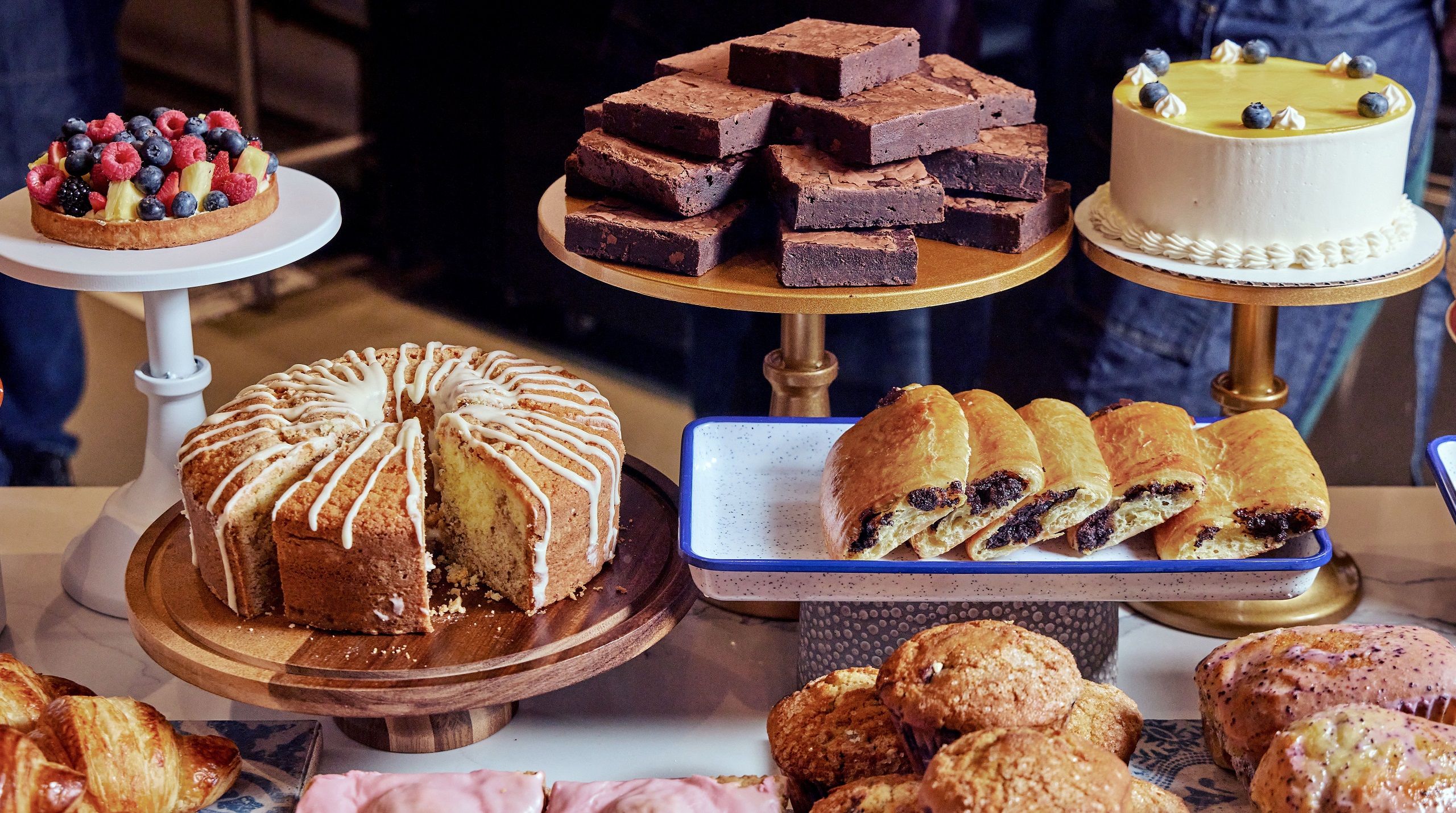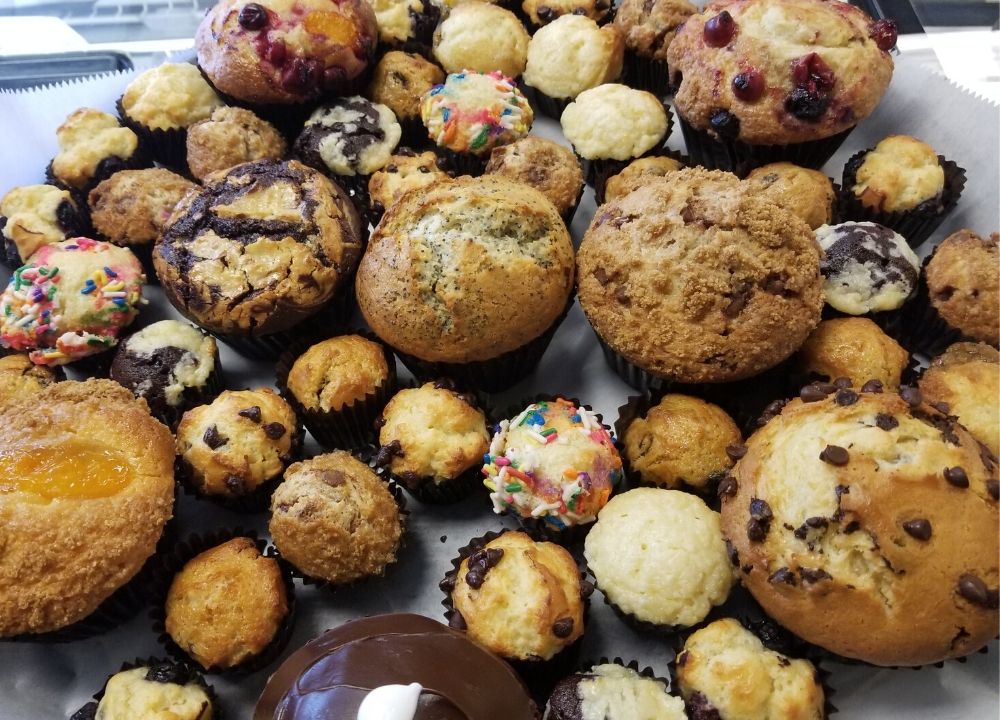Economical Finger Food Catering Maddington for Any Celebration
Economical Finger Food Catering Maddington for Any Celebration
Blog Article
Comprehending the Art of Pastry Shop Products: From Newly Baked Breads to Alluring Pastries and Finger Foods
From the science behind the best loaf of bread, where fermentation and gluten development play essential functions, to the finesse needed for producing layered breads, each element reveals an engaging story of workmanship. The versatility of finger foods shows how taste and structure can be skillfully integrated to engage diverse taste preferences.
The Science of Bread Making
At the heart of every loaf of bread exists an interesting interaction of chemistry and biology. The process of bread making starts with the combination of flour, yeast, water, and salt-- each active ingredient playing an essential role in the end product. Flour consists of healthy proteins, mainly glutenin and gliadin, which, when blended with water, kind gluten (Bakery Catering Maddington). This elastic network is necessary for trapping gases created during fermentation.
Yeast, a living microorganism, ferments the sugars existing in the flour, generating carbon dioxide and alcohol in the procedure. The carbon dioxide gas creates bubbles in the dough, creating it to climb and create a light structure. The temperature level and humidity during fermentation substantially affect yeast task and, subsequently, the bread's flavor and texture.

Mastering Pastry Strategies
How can one achieve the fragile equilibrium of structure and flavor that specifies phenomenal pastry? Grasping bread methods needs a deep understanding of active ingredients, approaches, and the scientific research behind them. Basic to this craft is the option of top notch ingredients-- flour, butter, sugar, and eggs-- each playing an essential function in the end product's taste and structure.
The strategy of lamination, which entails folding layers of dough and butter, produces the desired flakiness in pastries like croissants and smoke pastry. Accuracy in temperature level is essential, as butter must stay cool to make sure optimum layers. Correct blending techniques, such as the creaming strategy for cakes, make sure even unification of air and fat, resulting in a light and airy crumb.
Moreover, keeping the ideal humidity degrees during baking can dramatically affect the result, ensuring that breads climb correctly and achieve that golden-brown finish. Ultimately, the art of bread additionally demands persistence and practice; each effort boosts one's ability and understanding of the detailed balance called for to develop tempting breads that thrill the senses. Mastery in these methods inevitably differentiates a proficient pastry chef from an amateur.
Kinds Of Finger Foods
The world of cooking delights extends beyond breads to include a broad array of finger foods, which are celebrated for their benefit and versatility. These bite-sized treats are ideal for celebrations, offering a range of tastes and appearances that accommodate diverse tastes.

On the sweeter side, small tarts and bite-sized cupcakes provide a wonderful surface to any dish, interesting those with a pleasant tooth. Additionally, cheese and charcuterie boards act as an advanced choice, allowing visitors to tailor their attacks with a variety of meats, cheeses, nuts, and fruits.
Taste Profiles in Baking
Baking is a complex dance of taste profiles that combines pleasant, mouthwatering, and umami notes to produce a harmonious experience for the taste. Comprehending these accounts is important for bakers seeking to elevate their productions.
Sweetness usually functions as the structure in baked products, with sugars, why not try these out fruits, and all-natural sweeteners enhancing flavor depth. Active ingredients such as delicious chocolate and caramel introduce complex pleasant notes that can either dominate or complement other tastes. Alternatively, mouthwatering aspects, frequently located in breads and breads, offer equilibrium and contrast. Components like cheeses, flavors, and natural herbs can transform a straightforward dough right into a diverse flavor experience.
Umami, regularly neglected in baking, plays a considerable role in enhancing flavors. Components such as aged cheeses, fermented items, and even specific nuts add to a mouthwatering deepness that enhances total preference.
In addition, the interaction of acidity from components like buttermilk or citrus zest can brighten tastes, using a rejuvenating counterpoint to sweet taste. By attentively integrating these flavor accounts, bakers can craft products that reverberate with diverse tastes, producing a memorable culinary experience. Inevitably, understanding flavor accounts is vital to innovation worldwide of baking.
Vital Baking Equipments and Active Ingredients
Understanding taste accounts in baking sets the phase for picking the right devices and components that help with the creation of exceptional baked items. A trusted collection of baking pans-- such as sheet frying pans, loaf frying pans, and cake pans-- is crucial for attaining wanted shapes and textures.
In terms of active ingredients, top quality matters significantly. Flour works as the backbone of most dishes; selecting the right kind-- be it pastry, bread, or all-purpose flour-- can significantly influence the result. Sugar not only sweetens yet likewise adds to texture, while eggs serve as binders and raising representatives. Cooking powder and baking soft drink are vital for creating lift in cakes and breads.
In addition, integrating taste enhancers like vanilla essence, seasonings, and citrus zest can raise your productions. By guaranteeing accessibility to these basic tools and components, bakers can with confidence start their cooking trip, crafting a diverse range of fascinating baked items.
Conclusion
Mastery in bread making, pastry prep work, and finger food discussion exposes click resources the complex connections between components and processes. Finger Food Catering Maddington. Checking out diverse flavor accounts enhances the baking experience, while vital tools and ingredients offer the structure for success.
Just how can one attain the delicate balance of appearance and flavor that defines exceptional bread? Basic to this craft is the choice of premium ingredients-- flour, butter, sugar, and eggs-- each playing a crucial duty in the final item's flavor and appearance.

Recognizing flavor profiles in baking sets the phase for picking the right devices and active ingredients that facilitate the creation of extraordinary baked products. Checking out varied taste accounts improves the baking experience, while essential tools and ingredients offer the foundation for success.
Report this page